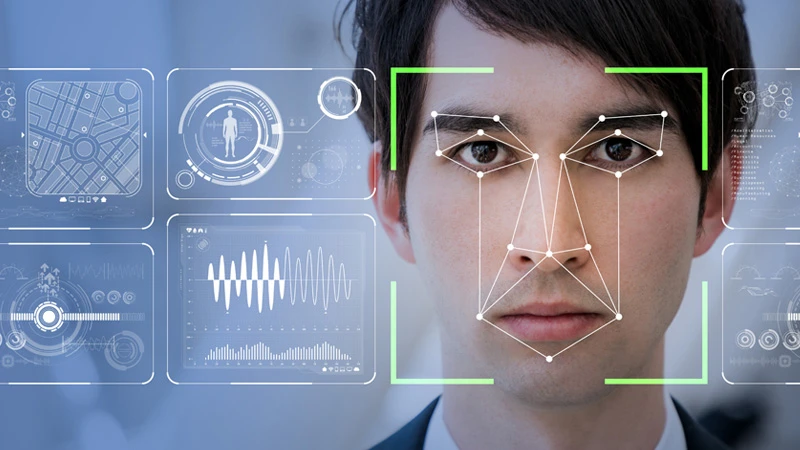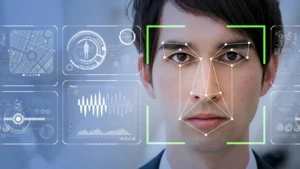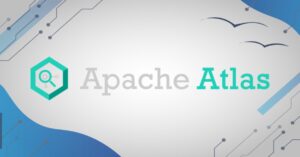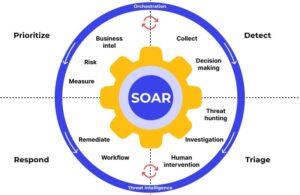How AI is Unlocking Human Thought Processes
In a pioneering study, Dr. Patrick Krauss and Dr. Achim Schilling from the Cognitive Computational Neuroscience Group at Friedrich-Alexander University (FAU) have used artificial intelligence (AI) to gain deeper insights into how our thoughts form and where they originate in the brain. This groundbreaking research has the potential to reshape our understanding of human cognitive processes and emotions.
While thought crimes may remain a distant science fiction scenario, the work of these researchers opens up a fascinating new frontier in understanding how the brain predicts, processes, and reacts to stimuli. The potential applications range from medical diagnostics to improving AI systems themselves.
The Predictive Brain: How AI Helps Read Our Thoughts
The human brain is constantly engaged in predicting what will happen next, a phenomenon known as predictive coding. It is one of the primary functions of the brain, allowing us to adapt our behavior and navigate the environment. From anticipating the next word in a sentence to predicting how the environment changes with each action, the brain works continuously at every level of complexity.
In their recent study, Dr. Krauss and Dr. Schilling used advanced AI techniques alongside traditional brain activity measurements like EEG and MEG to explore this process in unprecedented detail. Their findings offer new insights into the predictive nature of human thought.
How AI Tracks Brain Activity
In this study, researchers combined AI with conventional tools like EEG (electroencephalography) and MEG (magnetoencephalography), where electrodes are attached to the scalp to monitor brain activity. These traditional methods, augmented by the power of AI, have opened up new possibilities for tracking the spontaneous brain activity associated with thought processes.
Epilepsy: A Starting Point for AI-Assisted Brain Analysis
The study started with a focus on epilepsy, a condition where seizures begin with local excitations in the brain. These excitations rapidly spread across the entire brain, engaging nearly 100% of its capacity. Identifying the source of these excitations is crucial for treating epilepsy, often requiring neural implants.
In collaboration with the Epilepsy Center at Erlangen University Hospital, researchers implanted electrodes in patients’ brains to track epileptic foci. This data, collected from a rare and highly valuable sample, allowed the researchers to make a critical discovery about how the brain works.
AI and Local Field Potentials: A Foundation for Predictive Intelligence
The research revealed that certain spontaneous brain activities, known as Local Field Potentials (LFPs), play a key role in how the brain processes information, even in the absence of external stimuli.
What Are Local Field Potentials (LFPs)?
LFPs represent a type of brain signal that reflects the collective activity of neurons in a particular brain area. In this study, the AI-driven analysis found that LFPs might be the brain’s way of “rehearsing” different scenarios—playing out what could happen next, even when no stimuli are present.
Dr. Patrick Krauss: “We discovered that the brain is continuously moving through active states defined by these LFPs. It’s as if the brain is constantly running through simulations of what might happen next, even when no specific actions or perceptions are taking place.”
Dr. Achim Schilling: “We also found that the shape of these LFPs dictates the flow of information in the brain, providing crucial insights into how thoughts and emotions are processed in the human mind.”
AI-Driven Insights: Implications for Diagnosis and Treatment
The findings from this study not only pave the way for new research opportunities but also offer practical applications in medical diagnostics and treatment. By understanding the patterns of spontaneous brain activity, AI-driven techniques could enhance traditional methods like EEG and MEG.
Improved Diagnostic Capabilities
Dr. Achim Schilling: “Knowing what the brain usually does when it’s at rest could be useful for diagnostic purposes. If we can better understand how the brain processes information under normal conditions, we can develop more targeted diagnostic methods for neurological diseases.”
For example, if the brain enters a state that doesn’t correlate with external stimuli, it could indicate the onset of a pathological condition, providing an early warning system for disorders like epilepsy or other neurological diseases.
The Future of AI and Neuroscience Collaboration
The synergy between AI and brain research continues to grow, accelerating advancements in both fields. AI not only serves as a tool to decode brain activity but is also benefiting from the insights gained in neuroscience. The long-term goal is to develop AI systems that can predict events without relying on continuous input—much like how the human brain works.
Dr. Achim Schilling: “This could be particularly useful for AI systems embedded in vehicles, especially when considering safety concerns.”
For instance, even on an empty highway, an AI system embedded in a car could benefit from background predictions about possible road hazards, enabling faster reaction times in unexpected situations.
Dr. Patrick Krauss: “The AI system could continuously anticipate what road incidents might occur and respond accordingly, even when the driving environment seems stable.”
Conclusion: Expanding the Boundaries of Neuroscience and AI
The research conducted by Dr. Patrick Krauss and Dr. Achim Schilling demonstrates that the synergy between AI and brain science can push the boundaries of our understanding of cognitive processes and brain function. This collaboration could lead to innovative approaches in medical diagnostics, therapy, and beyond.
As the lines between technology and neuroscience blur, the importance of interdisciplinary approaches becomes clear. By leveraging AI and advanced brain science, researchers are closer than ever to decoding the intricate systems of the human mind. Stay tuned for more updates from this cutting-edge research community.














Post Comment